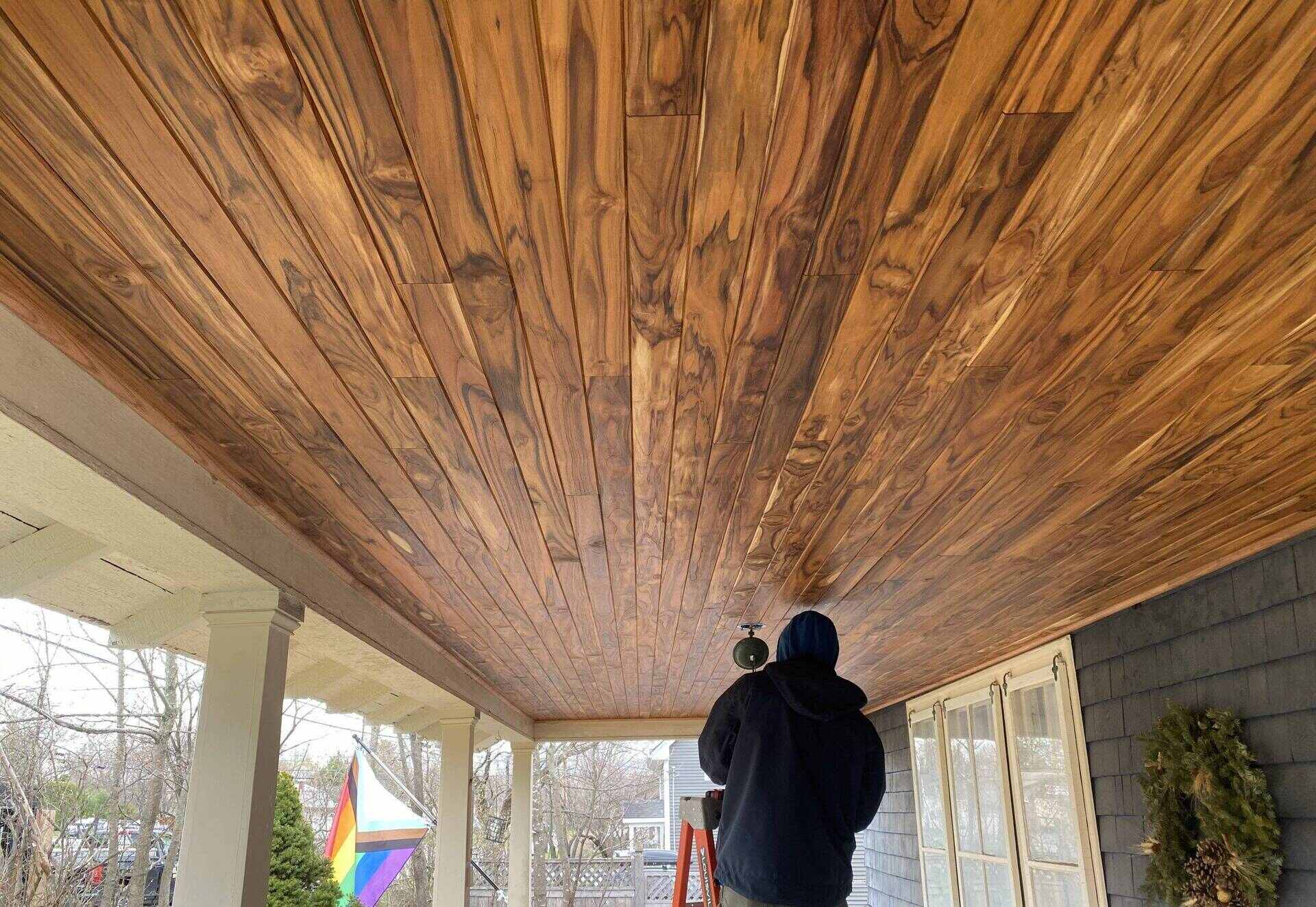

Articles
What Material To Use For Porch Ceiling
Modified: August 17, 2024
Looking for articles on what to use for your porch ceiling? Discover the best options and expert tips for your outdoor space.
(Many of the links in this article redirect to a specific reviewed product. Your purchase of these products through affiliate links helps to generate commission for Storables.com, at no extra cost. Learn more)
Introduction
When it comes to designing or renovating your porch, one important decision to make is what material to use for the ceiling. The porch ceiling not only adds to the overall aesthetic appeal of your outdoor space but also plays a functional role in protecting the porch from the elements. With a wide range of options available, it can be overwhelming to choose the right material. In this article, we’ll explore some popular choices for porch ceilings, highlighting their benefits and considerations.
Whether you prefer a classic, rustic look or a modern, low-maintenance option, there is something for every porch style and personal preference. From traditional wood to versatile vinyl, durable PVC, elegant beadboard, natural cedar, sleek aluminum, and composite materials, each option has unique characteristics that make it suitable for different applications.
By understanding the features, pros, and cons of each material, you can make an informed decision that aligns with your design vision, maintenance preferences, and budgetary constraints. So, let’s delve into the various options for porch ceilings and discover which one might be the perfect fit for your home.
Key Takeaways:
- Choose a porch ceiling material that aligns with your design vision, maintenance preferences, and budget. Consider factors such as aesthetics, durability, and practicality to make an informed decision.
- Balance the timeless appeal of wood with the low-maintenance benefits of vinyl, PVC, aluminum, or composite materials for a porch ceiling that enhances your outdoor space while withstanding the elements.
Read more: What Insulation To Use In Basement Ceiling
Option 1: Wood
Wood is a timeless and classic choice for porch ceilings. It provides a warm and rustic feel, adding natural beauty to your outdoor space. With many wood species available, such as pine, cedar, and cypress, you can find the perfect match for your porch design.
One of the advantages of using wood for your porch ceiling is its versatility. Wood can be stained or painted in a wide array of colors, allowing you to achieve the desired look and complement the overall style of your home. It can be left natural to showcase its grain and texture or painted to match other elements of your porch.
Wood ceilings also offer excellent acoustic qualities. With its natural sound-absorbing properties, a wood ceiling can help reduce noise and create a more peaceful and enjoyable outdoor environment. This is particularly beneficial if you plan to use your porch for entertaining or relaxing.
However, it’s important to note that wood requires regular maintenance to remain in optimal condition. It is susceptible to rot, insect damage, and warping if not properly cared for. You’ll need to regularly inspect and treat the wood to protect it from the elements. Additionally, wood may expand and contract with changes in temperature and humidity, so proper installation techniques are crucial to prevent issues such as cracks and gaps.
Overall, wood is a classic and versatile option for porch ceilings, providing a warm and inviting atmosphere. However, it does require ongoing maintenance to keep it looking its best.
Option 2: Vinyl
For those seeking a low-maintenance option with durability and convenience, vinyl is an excellent choice for porch ceilings. Vinyl is a synthetic material made from PVC (polyvinyl chloride), known for its longevity and resistance to moisture, rot, and pests.
One of the biggest advantages of using vinyl for your porch ceiling is its ability to withstand the harshest weather conditions. It is highly resistant to fading, cracking, and peeling, making it an ideal option for outdoor use. Vinyl is also easy to clean – a simple rinse with water and mild detergent is usually sufficient to remove any dirt or stains.
Vinyl is available in a wide range of styles and finishes, giving you the flexibility to achieve various aesthetic looks. Whether you prefer a sleek and modern appearance or a traditional and textured design, vinyl can mimic the appearance of wood, beadboard, or other materials to suit your preference.
Another advantage of vinyl is its ease of installation. It typically comes in interlocking panels or planks that can be easily installed over an existing ceiling or framework. This makes it a great option for both new constructions and renovations, as it can help save time and labor costs.
While vinyl provides many benefits, it’s worth noting that it may lack the authentic look and feel of natural materials like wood. Additionally, some homeowners have raised concerns about the environmental impact of PVC and its potential for off-gassing. However, manufacturers are constantly improving the sustainability and eco-friendliness of vinyl products.
In summary, if you prioritize low maintenance and durability, vinyl is a great choice for your porch ceiling. It offers weather resistance, easy installation, and a variety of styles to suit your design preferences.
Option 3: PVC
When it comes to durability, versatility, and ease of maintenance, PVC (polyvinyl chloride) is a top contender for porch ceilings. PVC is a synthetic plastic material that is highly resistant to moisture, rot, insects, and decay, making it an excellent choice for outdoor applications.
PVC porch ceilings offer several advantages. Firstly, they are virtually maintenance-free. Unlike wood or other organic materials, PVC does not require painting, staining, or sealing. It can be easily cleaned with soap and water to keep it looking fresh and vibrant. With PVC, you can enjoy your porch without the need for regular upkeep.
Another benefit of PVC is its versatility in design. It is available in various finishes, such as smooth, textured, or embossed, allowing you to achieve the desired look for your porch ceiling. PVC panels are often interlocking, providing a seamless and professional appearance when installed.
In terms of installation, PVC is lightweight and easy to work with. It can be cut, shaped, and installed using simple tools, making it a convenient option for DIY enthusiasts. PVC also has excellent dimensional stability, meaning it does not expand or contract significantly with temperature and humidity changes, resulting in a more durable and stable porch ceiling.
However, it’s important to consider that PVC may have a more synthetic appearance compared to natural materials like wood. Some homeowners prefer the authentic look and feel of wood or other organic materials, so it’s a matter of personal preference. Additionally, PVC may have a higher upfront cost compared to other materials, but its long-term durability and low maintenance requirements can offset these initial expenses.
Overall, PVC porch ceilings offer a durable, low-maintenance, and versatile option for those seeking a hassle-free solution. With its resistance to moisture and insects, PVC can provide a long-lasting and visually appealing ceiling for your porch.
Option 4: Beadboard
If you’re looking to add elegance and charm to your porch ceiling, beadboard is a popular choice. Beadboard is a type of paneling that features narrow, vertical planks with a distinctive groove, known as a bead, running along each edge. This design creates a timeless and traditional look that complements a variety of architectural styles.
One of the main advantages of using beadboard for your porch ceiling is its aesthetic appeal. It adds texture, depth, and visual interest to your outdoor space, creating a cozy and inviting atmosphere. Whether you opt for a classic white finish or choose to paint it in a color that matches your porch design, beadboard instantly elevates the overall look and feel of your porch.
Beadboard is typically made from wood, but it is also available in other materials such as PVC or fiber cement. This variety of options allows you to choose the right material that best suits your preferences and requirements. Wood beadboard provides a natural and warm appearance, while PVC and fiber cement offer enhanced durability and resistance to moisture and pests.
In terms of maintenance, beadboard made from wood requires periodic upkeep to prevent rot and water damage. It should be properly sealed, painted, or stained to protect it from the elements. On the other hand, PVC and fiber cement beadboard are low-maintenance options that resist moisture, fading, and warping, requiring only occasional cleaning.
Installing beadboard is relatively straightforward, especially if you opt for pre-cut panels that fit together seamlessly. It can be installed over an existing surface or directly onto a framework, depending on your porch’s construction. Proper installation techniques are important to ensure a professional and polished look.
In summary, beadboard is an exceptional choice for porch ceilings, offering a classic and elegant aesthetic. It adds character and charm to your outdoor space while providing versatility in material options. Whether you prefer the natural beauty of wood or the durability of PVC or fiber cement, beadboard is sure to enhance the visual appeal of your porch.
Consider using beadboard, tongue and groove, or PVC panels for your porch ceiling. These materials are durable, weather-resistant, and can provide a classic, attractive look for your outdoor space.
Read more: How To Clean Porch Ceiling
Option 5: Cedar
For a porch ceiling that exudes natural beauty and warmth, cedar is a top choice. Cedar is a type of softwood known for its rich color, attractive grain patterns, and natural resistance to decay and insects.
Using cedar for your porch ceiling can create a rustic and inviting atmosphere. The warm tones and distinct grain of cedar add charm and character to your outdoor space. Whether you prefer a natural finish to showcase the wood’s beauty or a stained or painted look, cedar can be customized to match your design preferences.
One of the main advantages of cedar is its natural durability. It contains natural oils and resins that act as a barrier against rot, decay, and insect infestation. This makes cedar an excellent choice for outdoor applications, as it can withstand the elements with minimal maintenance.
Another benefit of cedar is its dimensional stability. Cedar has a low shrinkage rate and is less prone to warping, swelling, or splitting compared to other wood species. This makes it a suitable material for porch ceilings, which are exposed to changes in temperature and humidity.
When considering cedar for your porch ceiling, it’s important to note that it will require periodic maintenance to keep it in optimal condition. Cedar can naturally turn gray over time due to exposure to sunlight and weather. Regular cleaning, sealing, and applying a protective finish will help prolong the lifespan and maintain the natural beauty of the wood.
Installation of cedar panels or planks for your porch ceiling is relatively straightforward. They can be attached to a framework or directly mounted onto an existing surface. Proper installation techniques, including adequate ventilation and spacing between the boards, are important to promote air circulation and prevent moisture buildup.
In summary, cedar is a beautiful and durable option for porch ceilings. Its natural resistance to decay, insect infestation, and dimensional stability make it a reliable choice for outdoor spaces. With proper maintenance, a cedar porch ceiling can enhance the aesthetic appeal of your porch and provide years of enjoyment.
Option 6: Aluminum
If you’re looking for a sleek and modern option for your porch ceiling, aluminum is worth considering. Aluminum is a lightweight and durable metal known for its resistance to rust, corrosion, and weathering.
One of the main advantages of aluminum for porch ceilings is its longevity and low maintenance requirements. Aluminum won’t rust or rot, making it an ideal choice for outdoor applications. It is also resistant to pests and insects, providing a hassle-free solution for your porch ceiling.
Aluminum porch ceilings offer a sleek and contemporary look. They can be finished in various colors and textures, allowing you to choose a style that complements your porch design. Whether you prefer a matte or glossy finish, aluminum can be customized to create the desired aesthetic effect.
Another benefit of aluminum is its lightweight nature, which makes it easy to handle and install. It can be easily cut and shaped to fit your porch dimensions. Aluminum ceiling panels are often designed with interlocking systems for quick and seamless installation.
In terms of maintenance, aluminum requires minimal upkeep. It can be cleaned with water and mild soap to remove any dirt or debris that accumulates over time. Aluminum is also resistant to fading, so you won’t have to worry about repainting or staining your porch ceiling.
Aluminum is an excellent choice for coastal areas or regions with high humidity, as it is resistant to saltwater corrosion. Its durability and resistance to weathering make it a long-lasting option, ensuring that your porch ceiling remains aesthetically pleasing for years to come.
While aluminum offers many benefits, it’s worth considering that it may have a more industrial or contemporary appearance compared to other materials like wood or beadboard. Some homeowners prefer a softer and more traditional look, so it’s important to choose a material that aligns with your design preferences.
In summary, aluminum porch ceilings provide a modern and low-maintenance option for your outdoor space. With its durability, resistance to corrosion, and ease of installation, aluminum is a reliable choice that offers long-lasting beauty and functionality.
Option 7: Composite
For homeowners seeking a versatile and durable option for their porch ceiling, composite materials are worth considering. Composite materials are engineered products that combine different materials, typically wood fibers and recycled plastics, to create a product that mimics the appearance of wood while offering enhanced durability and longevity.
One of the main advantages of using composite materials for your porch ceiling is their resistance to moisture, rot, insects, and fading. Unlike natural wood, composite materials won’t warp, crack, or splinter, making them an ideal choice for outdoor applications. They are designed to withstand the elements without the need for regular maintenance or treatment.
Composite porch ceilings are available in various finishes, textures, and colors, providing versatility in design. They can be selected to complement the style and décor of your porch, whether you prefer a rustic, traditional, or contemporary look. These materials are often manufactured with realistic wood textures and grain patterns that replicate the aesthetic appeal of natural wood.
Another advantage of composite materials is their environmentally friendly nature. Many composite products are made from recycled materials, reducing the demand for virgin resources. They are also highly durable, which means they won’t need to be replaced as frequently as natural wood, contributing to sustainability in the long run.
Installation of composite porch ceilings is typically straightforward, as they are designed to fit together seamlessly. The boards or panels can be easily cut, shaped, and installed using standard tools. Composite materials also have good dimensional stability, meaning they won’t expand or contract significantly with changes in temperature and humidity.
While composite materials offer many benefits, it’s important to consider the higher cost compared to other options like wood or vinyl. However, the long-term durability, low maintenance requirements, and eco-friendliness of composite materials may justify the higher upfront investment.
In summary, composite porch ceilings provide a durable, low-maintenance, and aesthetically pleasing option for outdoor spaces. With their resistance to moisture, insects, and fading, composite materials offer the look of natural wood without the drawbacks. Whether you prefer a traditional or contemporary style, composite porch ceilings can enhance the beauty and functionality of your porch for years to come.
Conclusion
Choosing the right material for your porch ceiling is an important decision that can greatly impact the overall aesthetics and functionality of your outdoor space. Each option discussed in this article has its own unique characteristics and benefits to offer.
Wood provides a timeless and classic look, but requires regular maintenance to keep it in optimal condition. Vinyl and PVC offer low-maintenance solutions with excellent durability and versatility in design. Beadboard adds elegance and charm, while cedar brings a natural and warm appeal. Aluminum provides a sleek and modern option, and composite materials offer durability, low maintenance, and sustainability.
Ultimately, the best choice for your porch ceiling depends on your personal preferences, design vision, and practical needs. Consider factors such as desired aesthetics, maintenance requirements, durability, and budget to make an informed decision.
Remember to balance aesthetics with practicality. Choose a material that not only looks beautiful but also offers the necessary durability and functionality to withstand outdoor conditions.
Lastly, don’t forget to consult with professionals or experts in the building and design industry if you have any specific questions or require guidance. They can provide valuable insights and help you select the ideal material for your porch ceiling.
By carefully considering the options available, you can create an inviting and visually appealing porch space that reflects your unique style and enhances your overall outdoor experience.
Frequently Asked Questions about What Material To Use For Porch Ceiling
Was this page helpful?
At Storables.com, we guarantee accurate and reliable information. Our content, validated by Expert Board Contributors, is crafted following stringent Editorial Policies. We're committed to providing you with well-researched, expert-backed insights for all your informational needs.
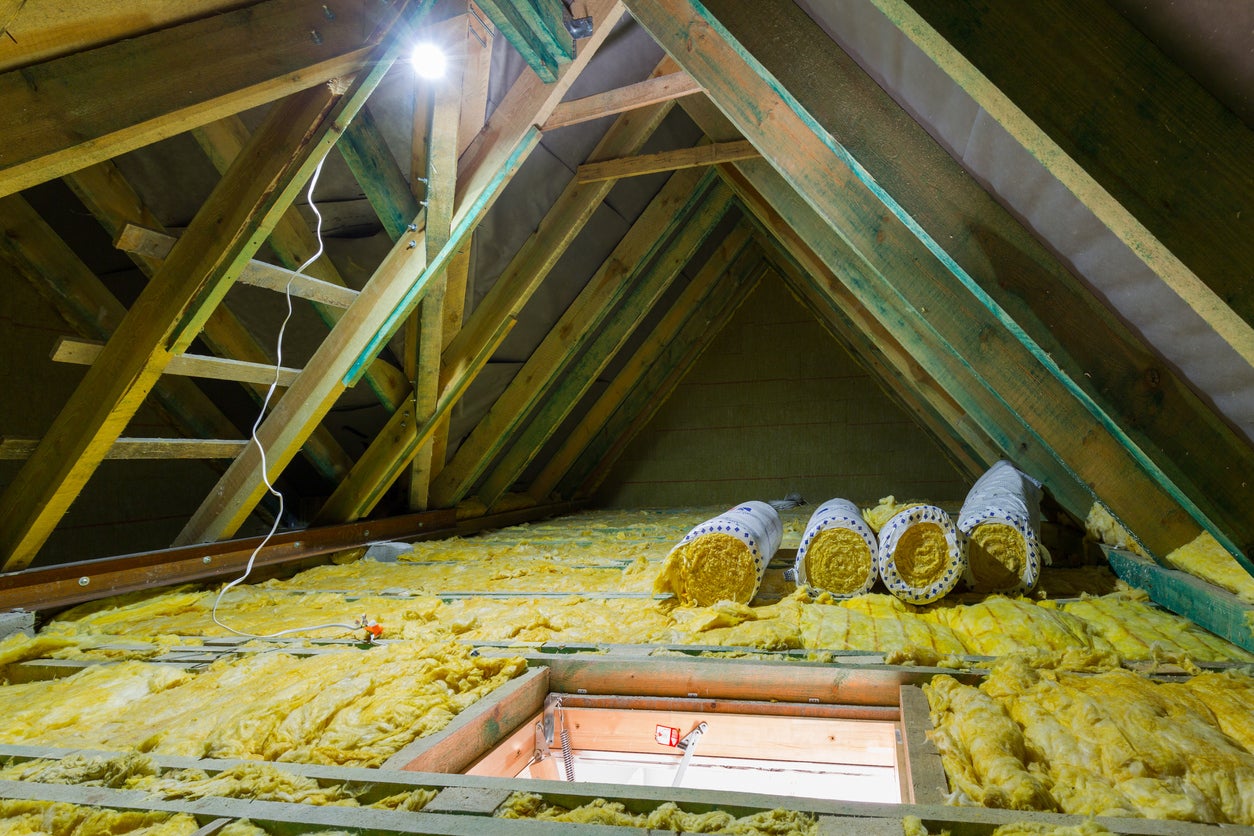
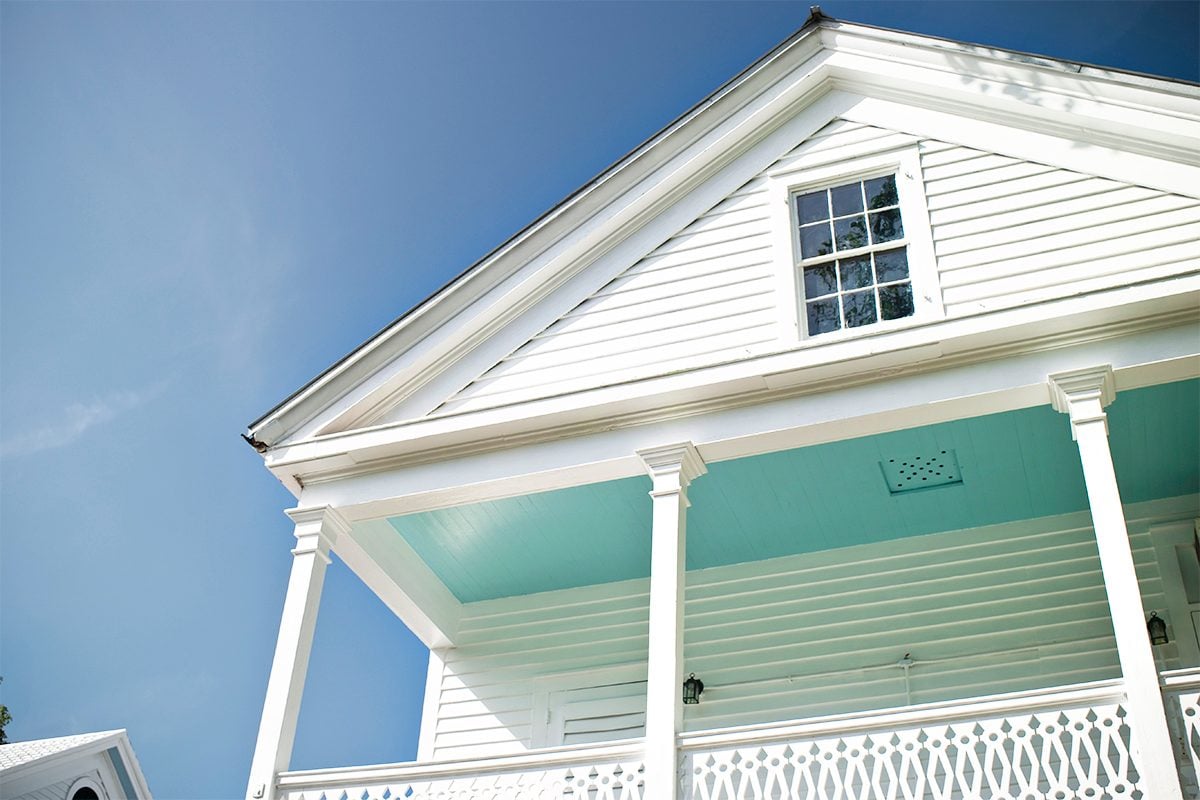
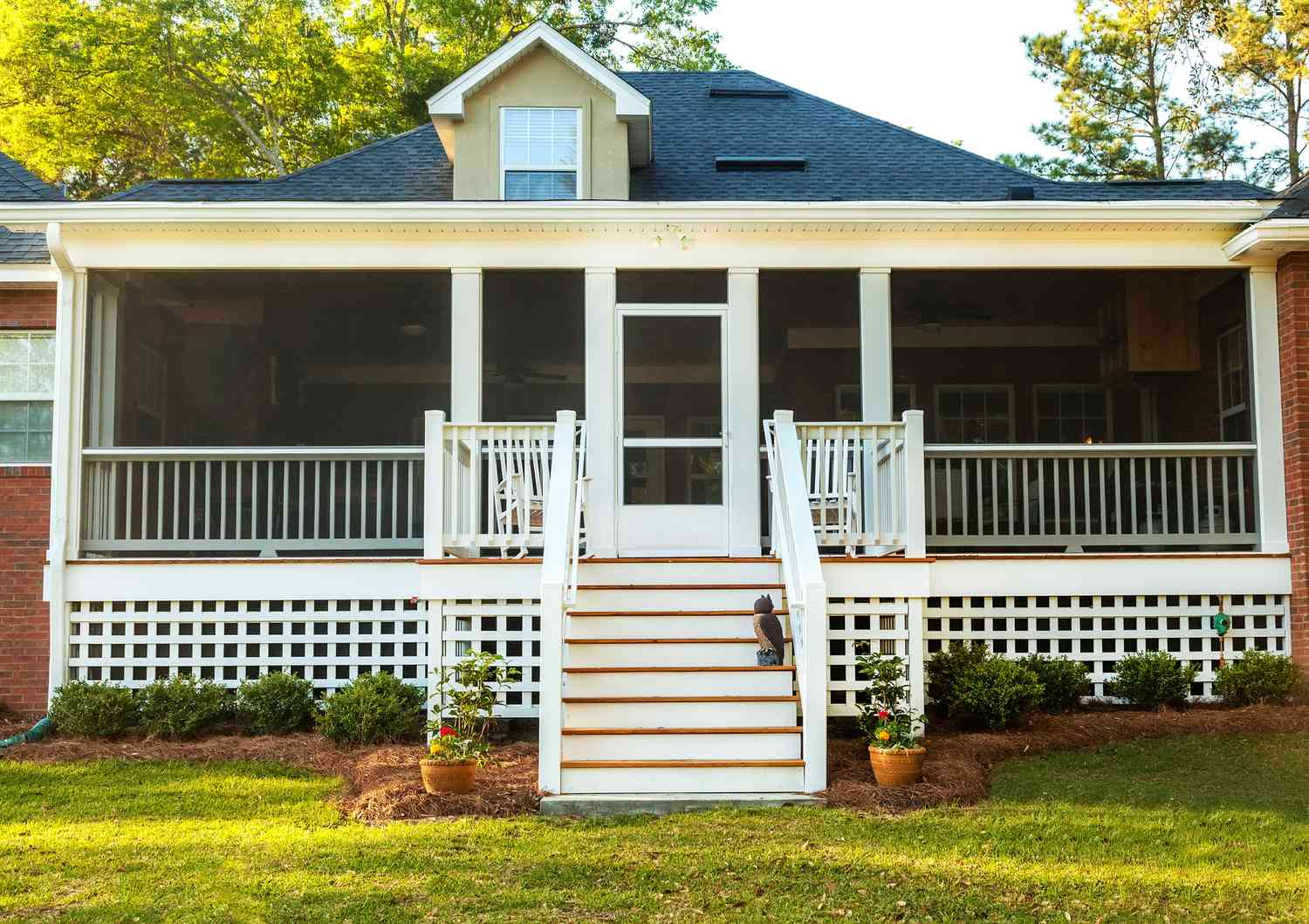
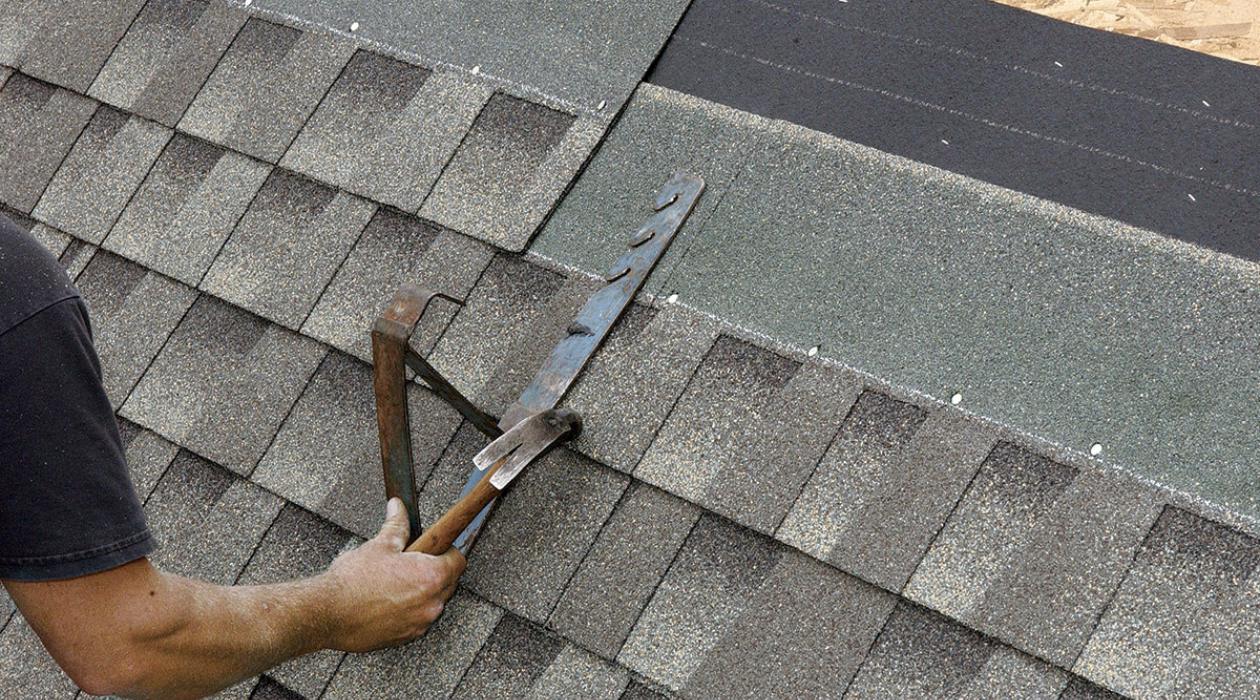
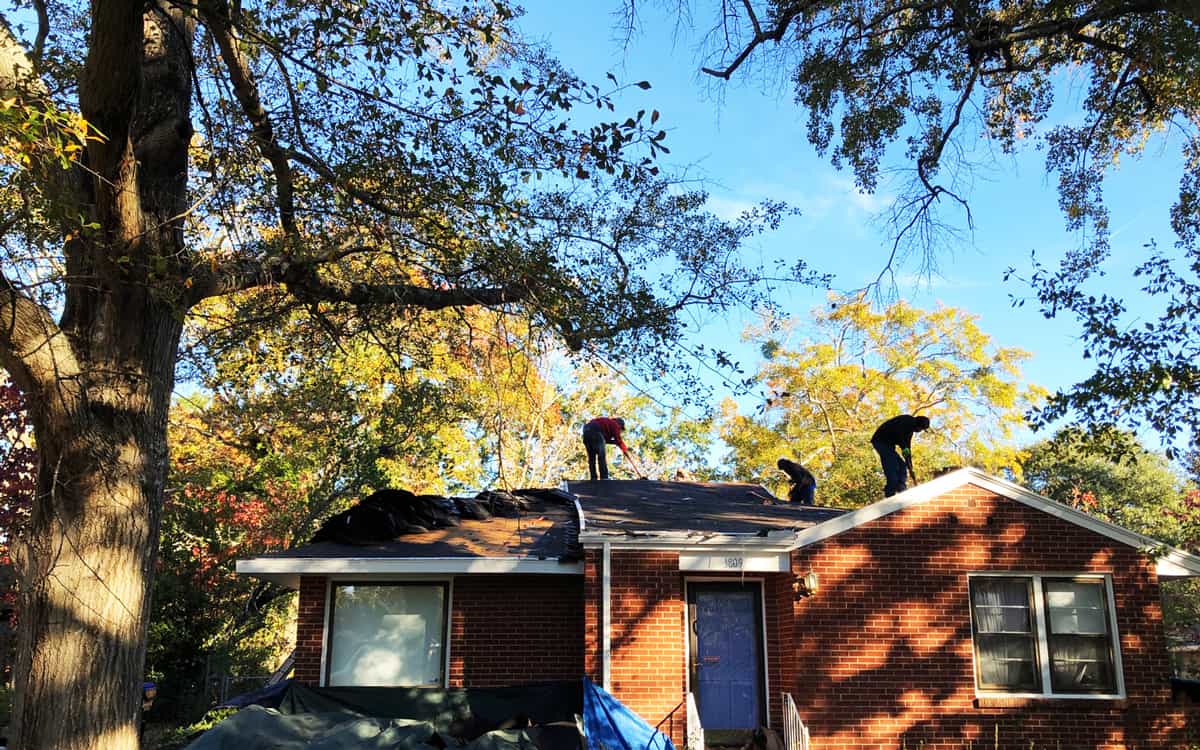
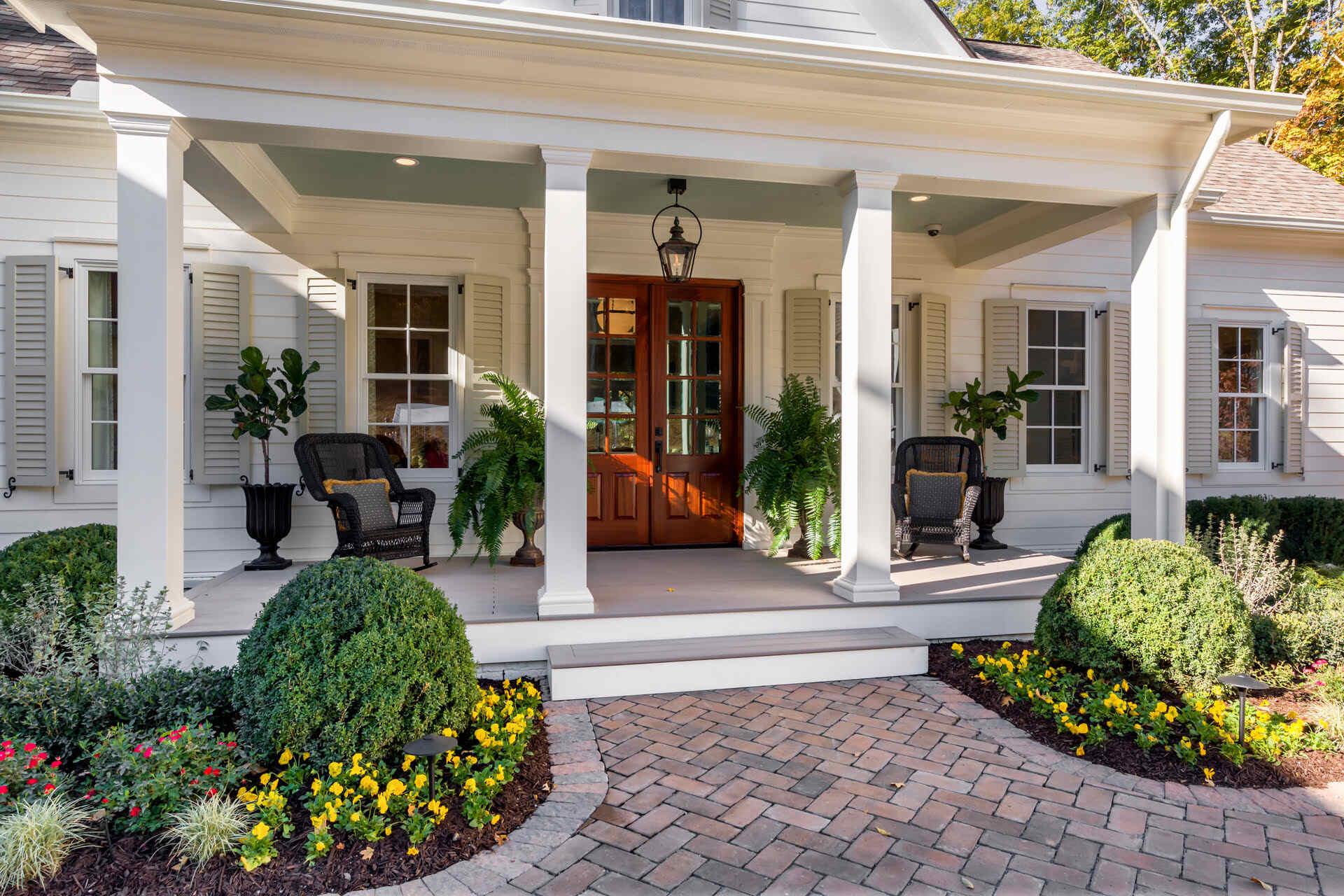
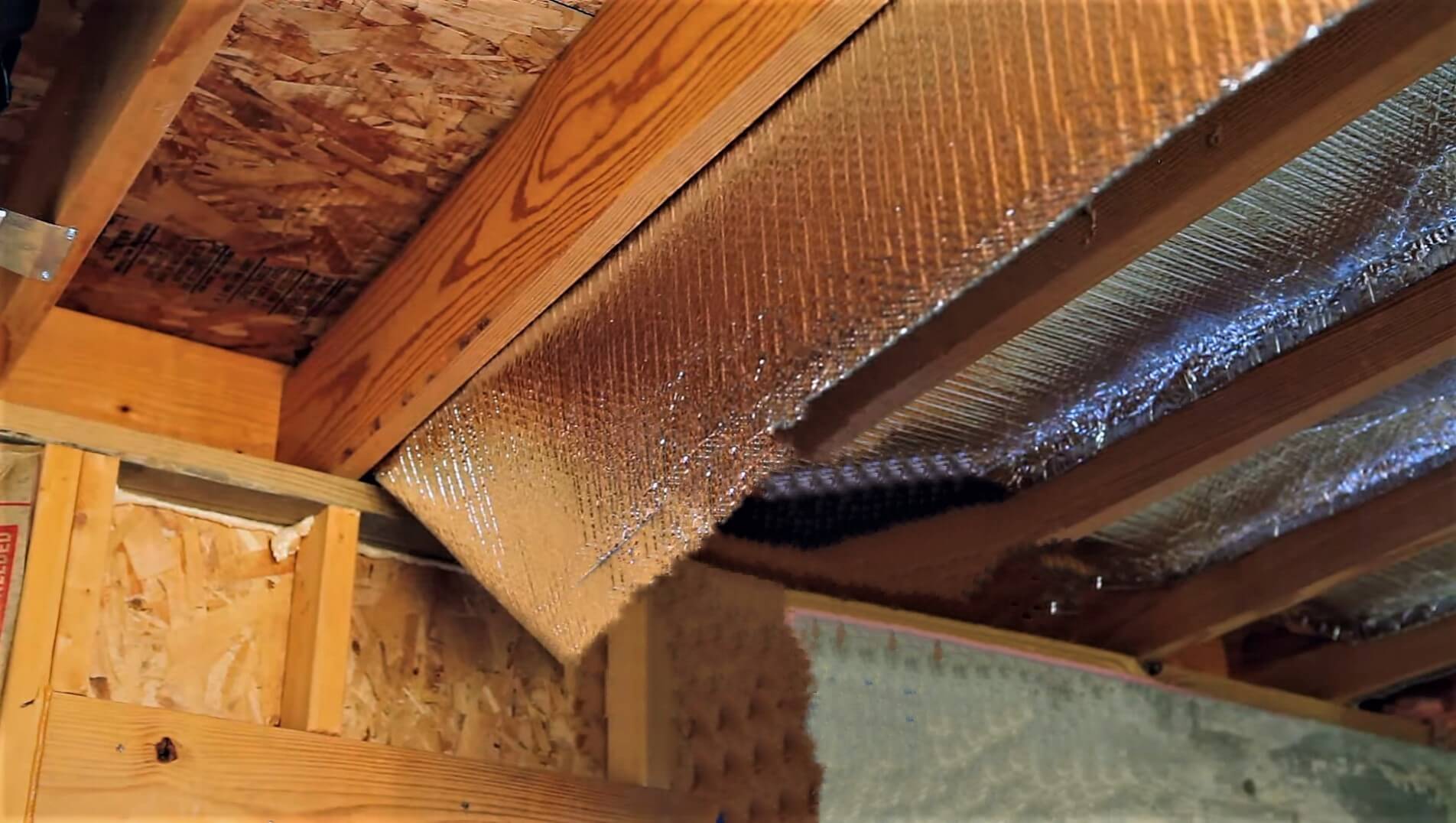
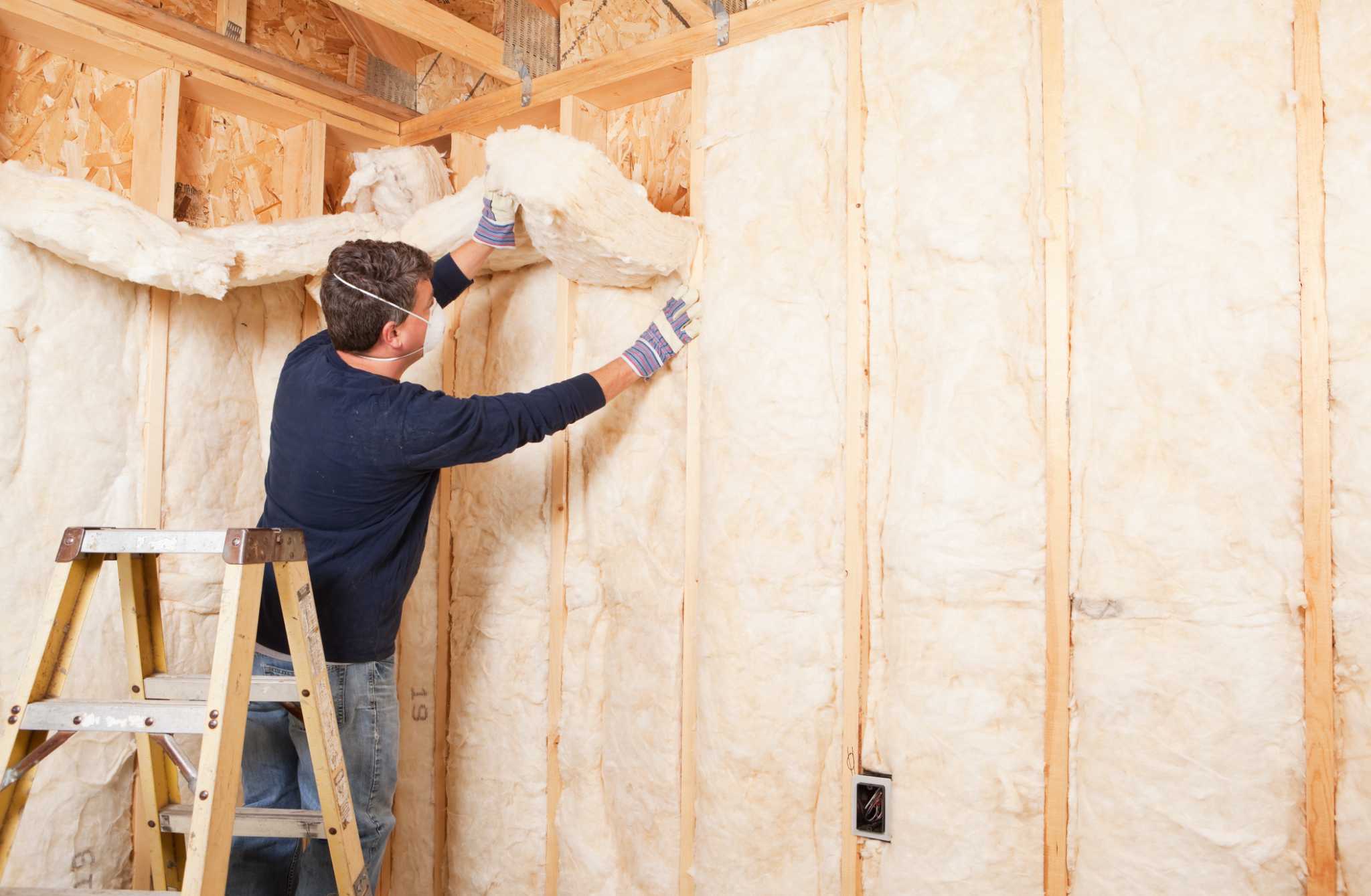

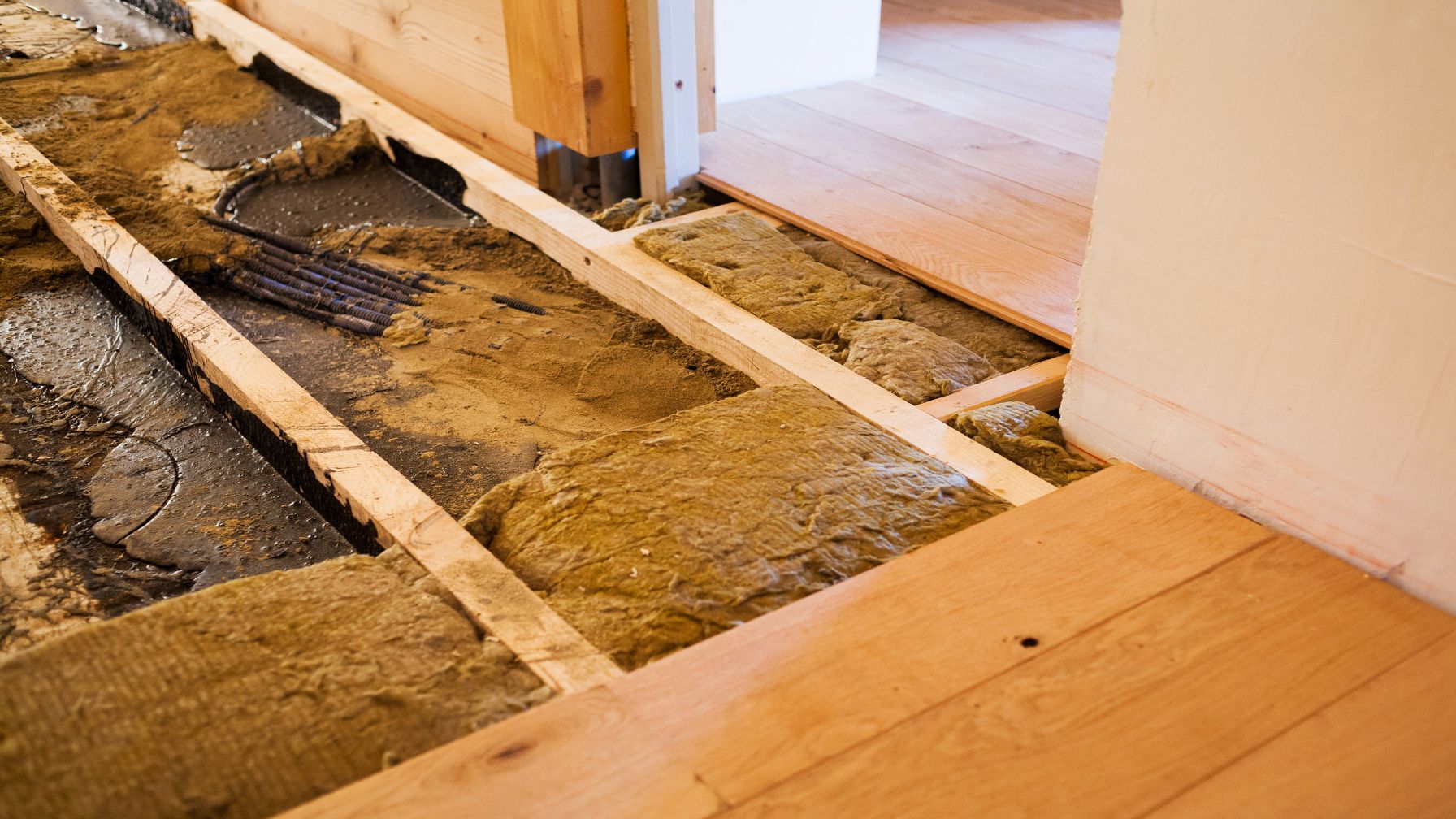
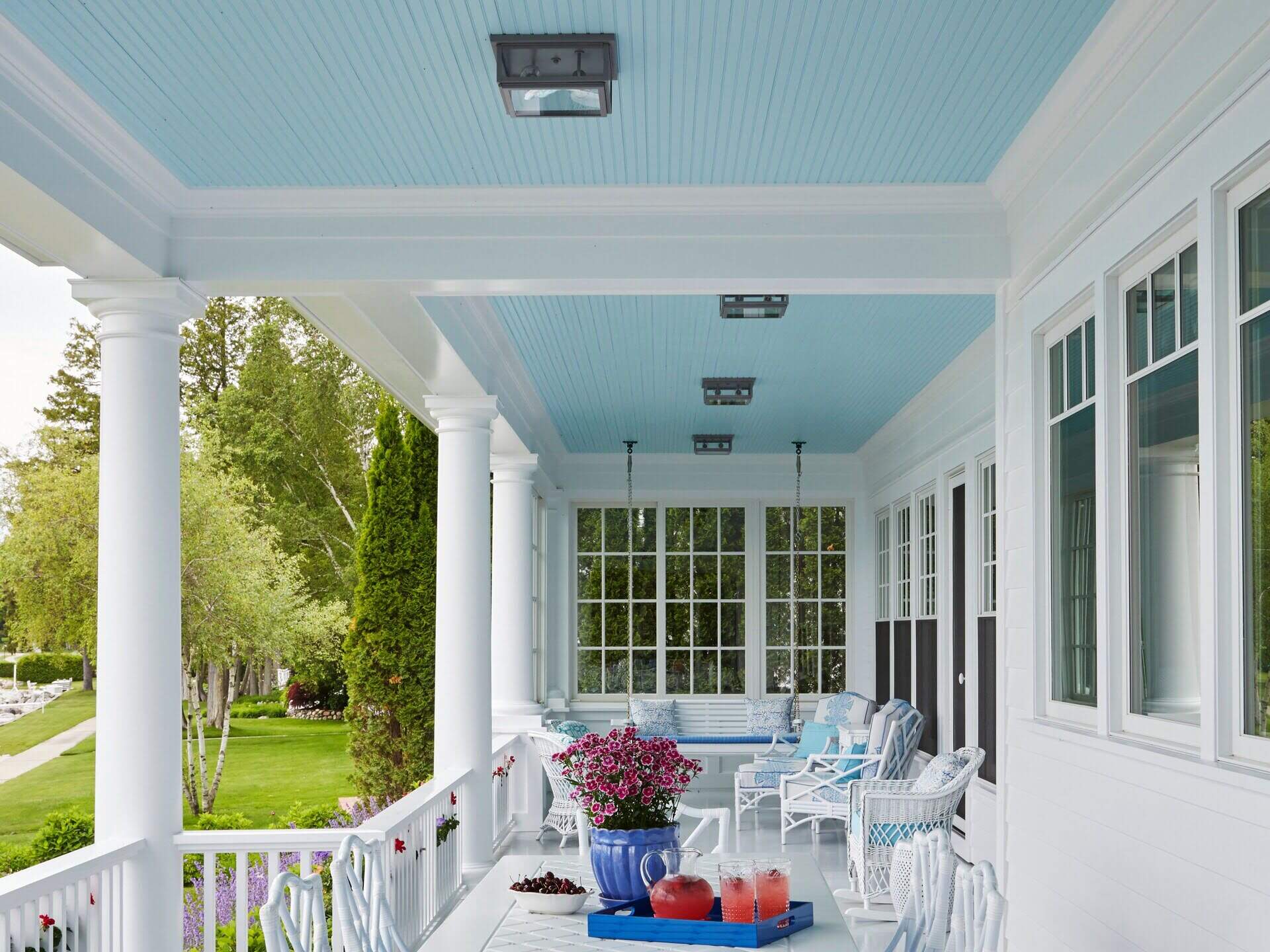

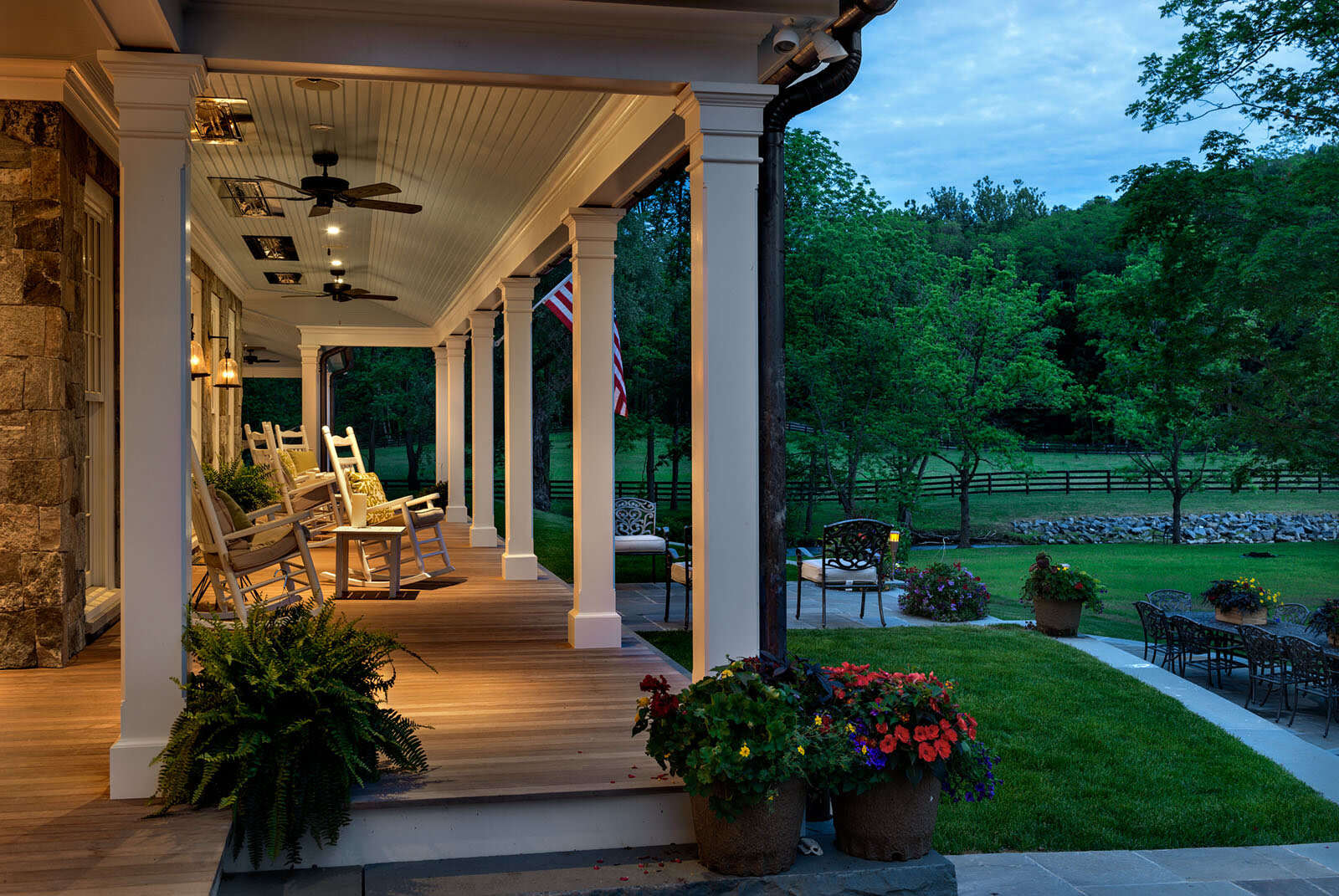
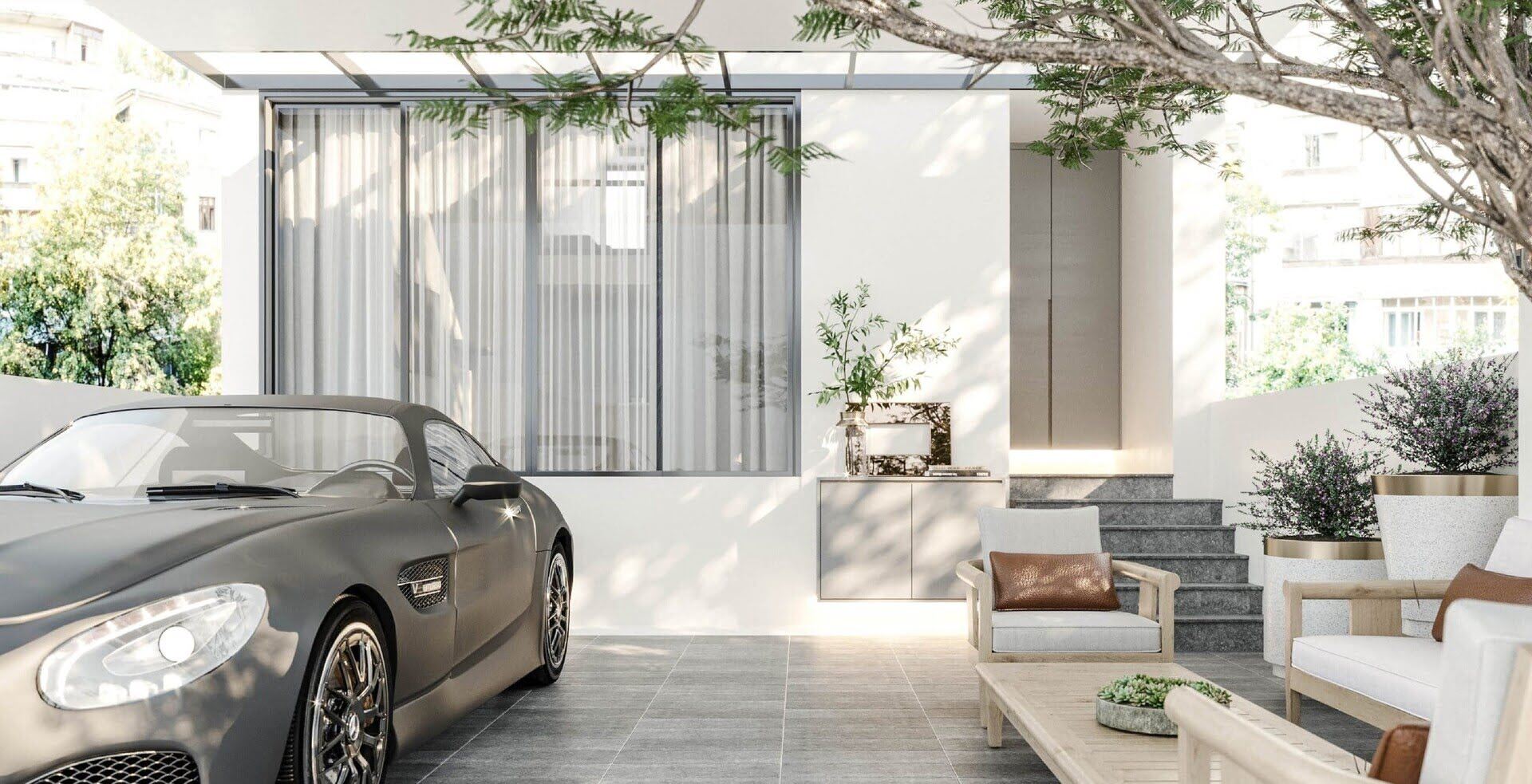

0 thoughts on “What Material To Use For Porch Ceiling”